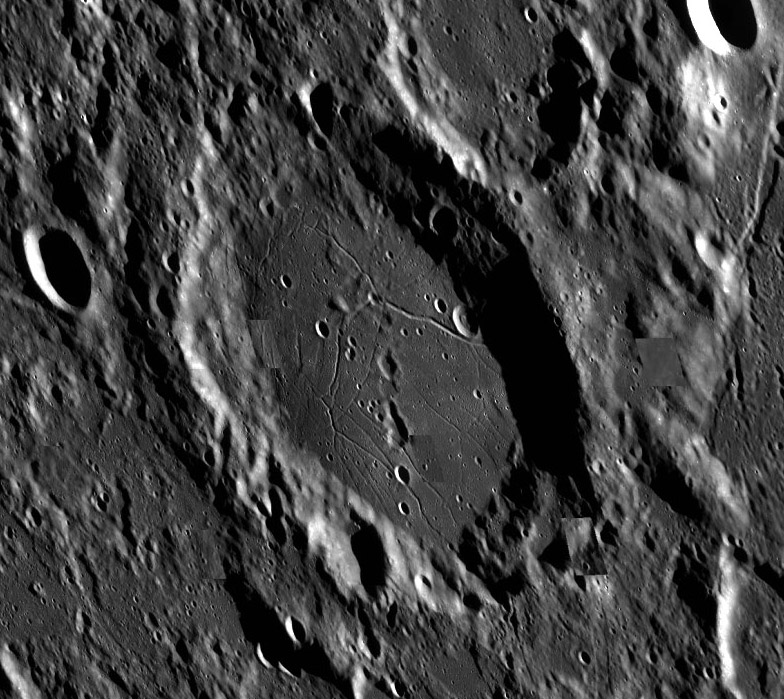March 4, 2011
Officially Mysterious

image snipped from [mailto: LRO-WAC Earthside Mosaic] (NASA/GSFC/Arizona State University)
Craters with rilles on their floors are generally of two types. In the first, the rille is a regional structure that cuts through the crater that happened to be in its way. In the second type the rilles are apparently related to uplift or subsidence of the crater floor and have elements that are roughly radial and concentric to the crater rim. Typically in the first type the rilles are linear troughs with wide floors and steep sides; Palmieri and Goclenius are good examples. The second type are floor-fractured craters such as Pitatus, Alphonsus and Gassendi, with narrow, curving rilles. Mersenius is different. There are 3 rilles that meet in a Y junction to the right of the off-center central peak. Near bottom left of the crater floor there are three narrow rilles that parallel each other, and 5 or 6 quasi-parallel rilles are across the bottom of the crater floor, all going in about the same direction. There has been evidence from terrestrial observations, supported by Kaguya topography, that the central part of the floor of Mersenius is slightly domed with a low annulus following the crater walls; none of these rilles seem to be connected to that possible uplift. IF the rilles are not related to regional forces, nor to crater floor movement, that qualifies them to be officially mysterious.
Chuck Wood
Related Links
Rükl plate 51
Yesterday's LPOD: No Longer Ageless
Tomorrow's LPOD: How Big is the Moon?
COMMENTS?
Register, Log in, and join in the comments.



